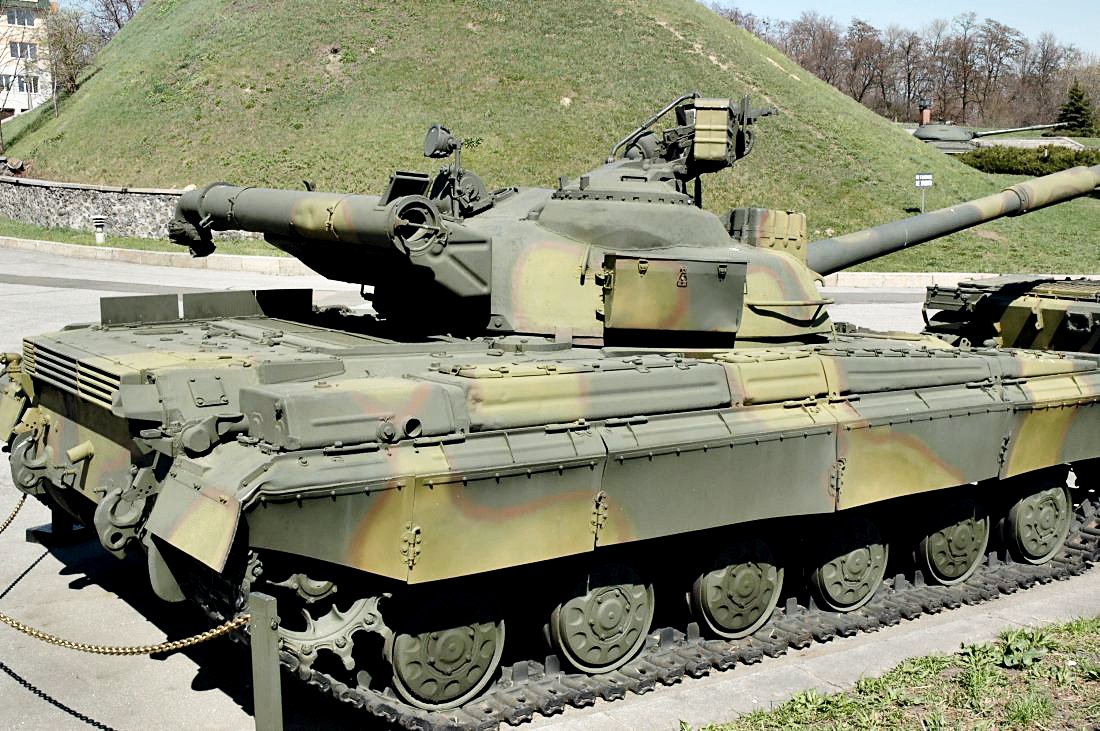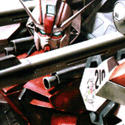|
Tias posted:I'm a recovering alcoholic, and I can tell you that to a person addicted, anything short of certain and forewarned death isn't a deterrant, and even then it's up in the air. Hospitalized sufferers will drink cleaning alcohols, and it's a pretty big nuisance in treatment wards. Oh yeah, cheap Russian perfume that was basically spirit-with-smell was a great impediment to young JcDent's "empty bottles to bubblegum" schemes. Drink quality bottled stuff, you bums.
|
|
|
|

|
| # ? May 27, 2024 21:52 |
|
HEY GAL, you should really think about writing a story for the 163x short fiction magazine. You know so much about the period, and your familiarity with the Mansfeld Regiment gives you a leg up on a story idea. Out of curiosity, what was the Mansfield Regiment doing during the 1630s?
|
|
|
|
Mycroft Holmes posted:HEY GAL, you should really think about writing a story for the 163x short fiction magazine. You know so much about the period, and your familiarity with the Mansfeld Regiment gives you a leg up on a story idea. Out of curiosity, what was the Mansfield Regiment doing during the 1630s? This Mansfeld Regiment was mustered in on 2 Nov 1625 and abgedanket from Spanish service on 5 July 1627. Mansfeld had wanted to roll it straight over into Imperial service (and his imperial patent is dated to early May, so the Imperial service overlaps with the Spanish service) but when those ten companies mutinied they ripped their flags off their poles so they no longer exist, legally. The regiment is some officers, two companies, a bunch of cav, and a lot of despairing letters. HEY GUNS fucked around with this message at 20:40 on Jul 15, 2015 |
|
|
|
Baconroll posted:On the topic of soldiers and booze, one of the stories from the Indian Mutiny is that one streets of one of the Indian cities about to be stormed by the British Army had bottles of booze lined up to delay the troops, as nothing would stop a redcoat faster than free alcohol. The problem was so bad that the officers had to run ahead of the men and smash the bottles with their swagger sticks so the troops would advance. Haha that sounds like the indian version of those racist western "one weird trick to fight the taliban, Al-Quaida hates it" stories about bacon coated bullets or something. Only it worked.
|
|
|
|
Ofaloaf posted:So Germans during WWII couldn't stick to a standardized frame for anything, partially just because it seems they liked tooling around, and partially because the hierarchy was so hosed up and full of weird administrative fiefdoms that everybody was ordering designs for different things and interfering with all sorts of poo poo, right? There were many factors at work: the Nazis went to war about two years earlier than anyone expected, and the aircraft industry was at maximum effort several years before World War 2 even began - to the point they were curtailing RnD because the anti-semetic brass felt they just couldn't spare the engines. And as Jobbo_Fett said, they actually had some really good multi-purpose airframes to boot. The heads of the RLM, the Reich Air Ministry sketched some plans on the last weekend of peace aboard Hermann Goering's yacht to rationalize production down to just four types: the Bf 109, the Ju 88, the Me 210, and the He 177. In another smart rationalization later on (that like the last one was never realized) the Ju 290 was planned to become a whole family of aircraft: the Nazis were planning on using the basic design for everything, and scaling it up to six engines when necessary. So some people in power were acutely conscious of the need for that sort of standardization - it just was never realized. Political infighting was a factor as well, but the main block at the RLM was that the top of the Nazi hierarchy was straight up incompetent on these issues. Consider that two of the RLM heads literally killed themselves in despair over how messed up aircraft procurement and production was, and you are starting to understand how bad things were.
|
|
|
|
HEY GAL posted:This is before standing armies, so while Mansfeld might have a regiment in the 30s, this particular Mansfeld Regiment will no longer exist. Conversely, if someone else had taken over the Mansfeld Regiment it would bear his name instead. This is almost universal except for a few regiments like lots of Spanish tercios, which have remained in esse for years by this point, same name, same flags and everything. (The practice makes companies really hard to follow, since Richter's Company one year will be Von Dorndorff's Company the next...) That's interesting. Well, I still think you should check out the 163x stuff. I'd give you a zip of all the short fiction, but that would be
|
|
|
|
The Texas Military Forces Museum at Camp Mabry in Austin have this Australian Sentinel on loan. Unfortunately, it's leaving tomorrow.   If you're in Austin, check out the museum. It's a good place to kill an hour or two.
|
|
|
Mycroft Holmes posted:That's interesting. Well, I still think you should check out the 163x stuff. I'd give you a zip of all the short fiction, but that would be Maybe if heygal did a nonfiction piece, a fiction piece would probably interfere too much with "american 163x" canon if heygal wrote it, since a lot of things happened or didn't happened because  . The cloth shipment ones would be a nice touch. . The cloth shipment ones would be a nice touch.
|
|
|
|
|
brozozo posted:The Texas Military Forces Museum at Camp Mabry in Austin have this Australian Sentinel on loan. Unfortunately, it's leaving tomorrow. It saddens me to see it in such a terrible shape next to all those other tanks/vehicles sporting nice camouflage patterns.
|
|
|
|
^^^^ Agewise there's a big difference there, and the few Sentinels made were run pretty hard in testing. Tias posted:I'm a recovering alcoholic, and I can tell you that to a person addicted, anything short of certain and forewarned death isn't a deterrant, and even then it's up in the air. Hospitalized sufferers will drink cleaning alcohols, and it's a pretty big nuisance in treatment wards.
|
|
|
|
Arquinsiel posted:^^^^ Very true, but I would still like to see it have a fresh coat of paint rather than the rust.
|
|
|
|
Nebakenezzer posted:There were many factors at work: the Nazis went to war about two years earlier than anyone expected, and the aircraft industry was at maximum effort several years before World War 2 even began - to the point they were curtailing RnD because the anti-semetic brass felt they just couldn't spare the engines. And as Jobbo_Fett said, they actually had some really good multi-purpose airframes to boot. The heads of the RLM, the Reich Air Ministry sketched some plans on the last weekend of peace aboard Hermann Goering's yacht to rationalize production down to just four types: the Bf 109, the Ju 88, the Me 210, and the He 177. In another smart rationalization later on (that like the last one was never realized) the Ju 290 was planned to become a whole family of aircraft: the Nazis were planning on using the basic design for everything, and scaling it up to six engines when necessary. So some people in power were acutely conscious of the need for that sort of standardization - it just was never realized. Killing yourself over aircraft procurement is hardcore. Arquinsiel posted:^^^^ My favorite beer was a 7,6 that tasted like caramel, and I used to take all my dates there. However, you can make a good case that if you need to drink cola or juice together with vodka to wash away the taste, you should probably be drinking something else.
|
|
|
|
A question for HEY GAL: What was the road system like in your period? Are Mansfield and the boys traipsing all over the Europe through field and forest or are there some actual roads to follow, and how are they not constantly lost?
|
|
|
|
brozozo posted:The Texas Military Forces Museum at Camp Mabry in Austin have this Australian Sentinel on loan. Unfortunately, it's leaving tomorrow. Is that
|
|
|
|
It seems like the shape of a bearded axe would lead to them being easily "hooked" into flesh/shields/etc and then lost.
|
|
|
|
I thought that the "hook" was used to pull shields?
|
|
|
|
Hogge Wild posted:I thought that the "hook" was used to pull shields? Yeah but it seems like it would just end up causing the axe to get yanked out of your hands more often than being able to use it to pull a shield away from somebody.
|
|
|
|
Rent-A-Cop posted:A question for HEY GAL: What was the road system like in your period? Are Mansfield and the boys traipsing all over the Europe through field and forest or are there some actual roads to follow, and how are they not constantly lost? And physically, everyone together actually can't use the same road. Especially the artillery, which will destroy some tracks. (They can't all live together either, since the settlements on the way can't support an entire army.) What you end up doing is splitting up to travel and live, like the VC did, and then reassembling yourself before something major. Messengers, money, and dudes with nothing better to do are constantly shuttling between the constituent parts of an army while this happens. My subjects in particular travel on The Spanish Road, which is a network of routes with Naples on one end and the Netherlands on the other. This is the "spinal column of the Spanish Empire," as Wedgewood put it, and it's been used forever. It's also one of the most important things behind Spanish policy decisions.  (Head up to Lake Constance and then hang a right after Lindau instead of turning left and making for the "Pfaffengasse" between the Empire and France, and you have a straight shot to Dresden) I'd say it's pretty hard to get lost there--by now the locals probably know what it means when a Spaniard or a Frenchman (well, a German in the employ of the Spanish or French) wanders up to them and goes "which...way...is...north?"--but then Stack Loeser got misplaced somewhere between Milan and Germany in the winter of 26/27, so there's that. Chillyrabbit posted:a lot of things happened or didn't happened because HEY GUNS fucked around with this message at 09:38 on Jul 16, 2015 |
|
|
|
Kanine posted:It seems like the shape of a bearded axe would lead to them being easily "hooked" into flesh/shields/etc and then lost. Agreed. Crossing out all references to bearded axes in the history books, good call goon.
|
|
|
|
What's the typical marching distance per day for an 17th century army? And how fast did smaller units and couriers travel?
|
|
|
|
Hogge Wild posted:What's the typical marching distance per day for an 17th century army? And how fast did smaller units and couriers travel? As for smaller units, consider the battle of Luetzen. Pappenheim's just sacked Halle when he gets a letter informing him that after a week or so of wondering where the Swedish army is, Wallenstein has finally found it. The letter arrives at midnight and Pappenheim is ready to head out at two (i guess it takes a while to scrape the guys out of the gutters in which they have found themselves). He leaves his infantry and cannon to catch up whenever they can and heads south with the cav and dragoons only. He arrives on the field at around twelve, just in time to hear that the left wing is in bad shape, reinforce it, and die. That's about 20 miles in about ten hours. Edit: I've posted that letter here a bunch of times, but here it is again:  "Dear Pappenheim: AAAAAAAAAAAAAAAAAAH yrs sincerely, Wallenstein" HEY GUNS fucked around with this message at 10:48 on Jul 16, 2015 |
|
|
|
HEY GAL posted:well, the Army of Flanders, which is superbly trained and blessed with sky-high morale, can make the blistering speed of...4.5 miles a day.  HEY GAL posted:As for smaller units, consider the battle of Luetzen. Pappenheim's just sacked Halle when he gets a letter informing him that Wallenstein has finally found the Swedish army. The letter arrives at midnight and Pappenheim is ready to head out at two (i guess it takes a while to scrape the guys out of the gutters in which they have found themselves). He leaves his infantry and cannon to catch up whenever they can and heads south with the cav and dragoons only. He arrives on the field at around twelve, just in time to hear that the left wing is in bad shape, reinforce it, and die. That's about 20 miles in about ten hours. That's a drat fine pace wrt the circumstances.
|
|
|
|
Don't get me wrong, I like it when people want to pay through the nose for a rush job, but boy howdy does it gently caress with my schedule. 100 Years and a bit Ago 12th July: General Hunter-Weston starts another attempt to move his drinks cabinet six inches closer to Krithia, in Africa there's a raid being planned on one of Colonel von Lettow-Vorbeck's outposts for attacks on the Uganda Railway, and General Joffre approves a plan for simultaneous major attacks in Artois and Champagne. 13th July: The battle continues on Gallipoli as we consider the difficulties of getting water forward to the men, attacking in heavy serge issue uniforms in the middle of a Mediterranean summer; the MEF's guns are also beginning to break down completely under the strain of firing again and again. In the Caucasus, the Russians are making progress on the Belican Hills. 14th July: Mining operations in the Ypres salient are impeded when the relevant Tunnelling Companies are mistaken for sex maniacs (I promise I am not making this up), that raid on Mbyuni in Africa goes terribly, the battle on Gallipoli concludes, and Louis Barthas is highly disgruntled by the brass hats' idea of a Bastille Day celebration. 15th July: The Fokker Eindecker scores its first confirmed victory, Kenneth Best is saved from disease by the Royal Arse Hortillery, and Louis Barthas gets lost in the dark. Today: The Russians on the Belican Hills are about to get hosed hard, not that they know it yet, Louis Barthas has something new to complain about, Kenneth Best meets a malingerer in the field ambulance; he disapproves strongly (when he's not sitting on the latrine), but I can't help but sympathise with him.
|
|
|
|
Jobbo_Fett posted:The Germans DID stick to a standardized frame though, that's why you have the Ju-88 and its many variants, or the Bf-109 and Fw-190 and so on. They just had difficulties developing replacements to those earlier designs thanks to pressure applied on all fronts, much like how the constant drain of manpower and necessity reduced the amount of time they could spend training which later affected their combat performance. I think Japan's competing strategic aims made it difficult to standardize. A fighter the army needs doesn't need to be as long ranged as a naval version. A anti-shipping plane that takes off from a land based to keep a port bottled up will differ in requirements from a carrier or Island launched version. We see this with the US military today with the F-35 why standardization may not be the ultimate end goal either.
|
|
|
|
Monocled Falcon posted:Can I get an effort post on Napoleonic artillery? I'm mostly trying to get a sense of how many pounds of lead are flying through the air compared to other time periods, like the early modern. Artillery shot was cast iron (in Napoleonic times) and steel now. So, no lead  (except for the case of canister shot, which was literally a keg of musket balls, but that was generally a "keep the guns from being overrun" last-ditch effort). (except for the case of canister shot, which was literally a keg of musket balls, but that was generally a "keep the guns from being overrun" last-ditch effort).Warning: this post will be in pounds and inches because all this poo poo was standardized before the SI was invented. Field artillery in the Napoleonic era was generally 3- to 12-pounder guns, but I don't know the number of guns in a battery or batteries to a regiment. My (amateur) research tends more toward the British Navy. So here's an effortpost on naval artillery of the era: Cannonballs are a lot smaller than most people think; Pirates of the Caribbean had ships trading CGI beachballs. Actual shot is much smaller -- for field guns, around baseball to softball-sized. The guns are named for the size of the shot; a 6-pounder, for example, throws a six-pound iron ball, which is 3.5" in diameter. A 12lb ball is just under 4.5". The biggest common naval guns of the era were 32-pounders, with a bore of 6.1" (42-pounders existed and had been used on ships vying for the title of "biggest swingin' dick on the Seven Seas" in the previous two centuries, but the guns were too heavy to be practical in an actual fight.) Back when ships were oak and men were iron, the RN had a rating system for ships -- a fifth- or sixth-rate frigate had one gundeck mounting 20-25 12-pounders (plus various smaller guns on the weather deck), up to a first-rate, which had 100+ guns on three decks -- usually 12-pounders on the upper, 24-pounders on the middle, and 32-pounders on the lower, for obvious reasons of keeping the center of gravity low; heavier shot means heavier guns, and more than one ship fell over and sank in the 17th century because they had too many big guns up high. Fourth-rate (46-50 guns) and up were considered fit to fight in the line of battle. The smaller frigates, by gentleman's agreement, acted as messengers and scouts and were usually not fired upon by the heavies. Sort of like battleships and destroyers in WWII. Nelson's flagship Victory was a first-rate, having at her prime 104 guns, throwing a broadside of 1150 pounds if the weather was good.  In all but the calmest seas, the three-deckers would have to close off their lower gunports to avoid shipping water through them from waves and the ship heeling over when turning, which reduced their firepower significantly. So all of Victory's guns, on both sides, firing at once would be somewhat less metal in the air than a single 16" shell from Iowa. Also, naval gunfights are If you do manage to get a lucky shot through a gunport and knock a gun off its carriage, hooray! That's two and a half tons of metal rolling fore and aft with every swell, crushing men left and right, tearing other guns loose from their ropes, and if the wind picks up it might even decide to leave the ship entirely, punching a bigass hole in one end.
|
|
|
|
By the way, guys, what are these tube things on the back of the turret?
|
|
|
|
Snorkeling equipment IIRC.
|
|
|
|
Yeah, looks to be the stowed position of the snorkel.
|
|
|
|
Thank you! Even if the truth isn't extremely exciting... Slowly, I am learning about the bits and bobs found on tanks. Also:  on that Napoleonic naval artillery. Spall lining was a great joy to many, I think. on that Napoleonic naval artillery. Spall lining was a great joy to many, I think.
|
|
|
|
Delivery McGee posted:Also, naval gunfights are I don't think I've ever disagreed more with Mythbusters then when they "busted" the "myth" that splinters were more dangerous than cannon balls in naval warfare.
|
|
|
|
How'd they manage that? Confuse going from overkill to huge overkill with an increase in lethality and ignore the role of actually hitting things?
|
|
|
|
They just didn't do a very good job of creating the circumstances of the myth. Like they used something dinky like a six pound cannon and never got a significantly large enough splinter to skewer one of the pig carcasses they were using for a human analog. I get there are difficulties in recreating the environment of old-timey ship combat, but they could've at least mentioned the historical record (And granted most of what I know about napoleonic naval warfare comes from Hornblower).
|
|
|
|
howe_sam posted:They just didn't do a very good job of creating the circumstances of the myth. Like they used something dinky like a six pound cannon and never got a significantly large enough splinter to skewer one of the pig carcasses they were using for a human analog. I get there are difficulties in recreating the environment of old-timey ship combat, but they could've at least mentioned the historical record (And granted most of what I know about napoleonic naval warfare comes from Hornblower). You should definitely read Patrick O'Brian's Aubrey/Maturin series. Actually, everyone should. The greatest historical novel series ever made. Hornblower blows compared to it.
|
|
|
|
Raenir Salazar posted:I think Japan's competing strategic aims made it difficult to standardize. A fighter the army needs doesn't need to be as long ranged as a naval version. A anti-shipping plane that takes off from a land based to keep a port bottled up will differ in requirements from a carrier or Island launched version. We see this with the US military today with the F-35 why standardization may not be the ultimate end goal either. Japan had competing military branches, but I would argue that they didn't stray so far away from standardizing, where they could, than other nations. WW2 was a time that really pushed the envelope of technology, going from biplanes to jet planes, and this is reflected in just how many different aircraft were in a country's inventory. The Navy was heavily standardized, just look at the Zero, which was one of the only fighters in the naval arm; the G4M betty, the B6N, and the D4Y. The army similarly had designs that lasted for some time with the Ki-21, Ki-43, Ki-44, Ki-84, etc. When it comes down to it, Japan's issue was lack of technical skill from labour forces, lack of production capabilities, favouring agility over speed, inability to produce engines with high outputs that could match US designs, etc.
|
|
|
|
Jobbo_Fett posted:Japan had competing military branches, but I would argue that they didn't stray so far away from standardizing, where they could, than other nations. WW2 was a time that really pushed the envelope of technology, going from biplanes to jet planes, and this is reflected in just how many different aircraft were in a country's inventory. The Navy was heavily standardized, just look at the Zero, which was one of the only fighters in the naval arm; the G4M betty, the B6N, and the D4Y. The army similarly had designs that lasted for some time with the Ki-21, Ki-43, Ki-44, Ki-84, etc. Why did they have so much trouble with engines, anyway?
|
|
|
|
Mycroft Holmes posted:Why did they have so much trouble with engines, anyway? I'm not entirely sure, I believe it was just a lack of expertise in the area mixed with bad production qualities. I'll check some of my books and see if they point to anything concrete.
|
|
|
|
Mycroft Holmes posted:Why did they have so much trouble with engines, anyway? The two biggest issues were metallurgy and fuel quality. The Japanese had consistent issues with metal of all kinds throughout the war; aero engines were (and still are in a lot of ways) the most demanding metallurgic projects around and they never really had a chance of catching up in that regard. No high temp/high strength metals really limits your ability to build a high performance aero engine. Fuel is the other thing; for various reasons (both supply and refining technology) the Japanese were maxxing out with 87 octane fuel at their best, and even worse towards the end of the war. In contrast the US had easy access to 95 octane early on the war, 130 was standard by the end, and some planes even had access to the 150 octane miracle stuff that the Brits produced. Fuel quality might not seem like a huge deal but it made a massive difference in performance in boosted engines: for example, when the RAF switched from 87 to 130 fuel in the same engine (Merlin I) it changed the output from roughly 1,000 to 1,300 horsepower at sea level, and the higher you went, the more pronounced the difference. Jobbo_Fett posted:I'm not entirely sure, I believe it was just a lack of expertise in the area mixed with bad production qualities. I'll check some of my books and see if they point to anything concrete. It was actually kind of the opposite if you can believe it. Japanese craftsmanship on their aircraft in general was of the highest order and the engines were no different. Allied analysts who got to look at Japanese aircraft were pretty stunned by how well crafted they were. The metal limitations were a main reason for this: they couldn't bludgeon their way out of problems with more or better metal like the US or Germany did. That being said, their maintenance and sustainment processes were....really bad, as have been discussed at some length. The fine tolerances of the engines really didn't help these matters. bewbies fucked around with this message at 18:45 on Jul 16, 2015 |
|
|
|
bewbies posted:The two biggest issues were metallurgy and fuel quality. The Japanese had consistent issues with metal of all kinds throughout the war; aero engines were (and still are in a lot of ways) the most demanding metallurgic projects around and they never really had a chance of catching up in that regard. No high temp/high strength metals really limits your ability to build a high performance aero engine. Another thing that should be noted is that Japanese engines were getting better as the war progressed, yet they could never catch up to American engines in HP output. For example, the Japanese aircraft engines were barely scratching or surpassing 2000 hp by the end, while the Americans achieved that in mass quantities by late 1941.
|
|
|
|
bewbies posted:The two biggest issues were metallurgy and fuel quality. The Japanese had consistent issues with metal of all kinds throughout the war; aero engines were (and still are in a lot of ways) the most demanding metallurgic projects around and they never really had a chance of catching up in that regard. No high temp/high strength metals really limits your ability to build a high performance aero engine. Isn't it that ores in Japan are kind of lovely, that's why you needed to fold katanas five thousand times? Oh, and I recently finished reading Achtung Panzer (midblowing book for me), and they mention that Guderian was too optimistic on synthetic rubber and fuel. How exactly does synthetic rubber and fuel happen?
|
|
|
|

|
| # ? May 27, 2024 21:52 |
|
JcDent posted:Isn't it that ores in Japan are kind of lovely, that's why you needed to fold katanas five thousand times?
|
|
|
























 Bad Angus! Bad!
Bad Angus! Bad!





